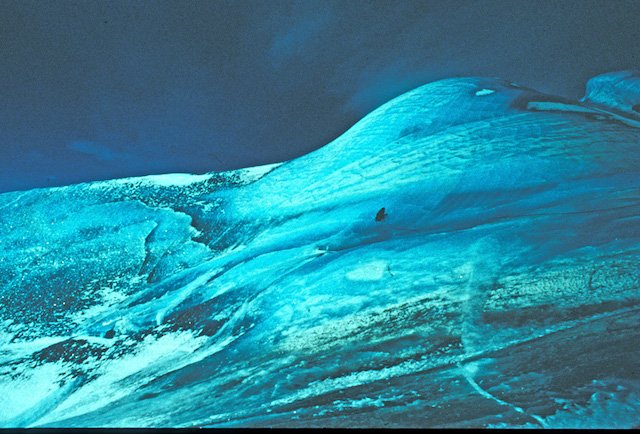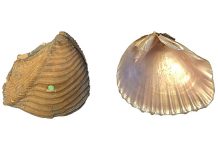
In a new study, researchers explain why some icebergs have green color instead of the normal blue.
The study was done by a team from the University of Washington.
Pure ice is blue because ice absorbs more red light than blue light.
Previous studies have shown that most icebergs appear white or blue when floating in seawater.
However, scientists have seen some green icebergs since 100 years ago.
In the current study, the team suggests that iron oxides in rock dust from Antarctica’s mainland may make some icebergs green.
This is based on recent findings of large amounts of iron in East Antarctica’s Amery Ice Shelf.
The researchers suggest that iron is a key nutrient for phytoplankton, microscopic plants that form the base of the marine food web.
According to them, icebergs can deliver this iron out into the ocean far away, and then melt and deliver it to the phytoplankton, which can use it as a nutrient.
In Antarctica, some icebergs have a layer of marine ice. The marine ice is formed when ocean water is frozen to the underside of an overhanging ice shelf.
The marine ice is clearer and darker than glacier ice.
The team’s previous research has shown that the green color is not from the dissolved organic carbon, microscopic particles of long-dead marine plants and animals.
A recent study from the University of Tasmania showed that marine ice near the bottom of the ice core from the Amery Ice Shelf had nearly 500 times more iron than the glacial ice above.
The researchers of the current study suggest that iron oxides can be found in soil, rocks, and common rust and tend to have warm, earthy colors, such as yellows, oranges, reds, and browns.
The iron oxides in the marine ice may turn blue ice green.
The team suggests that the iron oxides in glacial flour from rocks on Antarctica’s mainland may help make the iceberg green.
They plan to examine the icebergs of different colors for their iron content and light-reflecting properties.
Their work will test their theory of how green icebergs form.
The lead author of the study is Stephen Warren, a glaciologist and professor emeritus in the University of Washington’s atmospheric sciences department.
The study is published in Journal of Geophysical Research: Oceans.
Copyright © 2019 Knowridge Science Report. All rights reserved.



